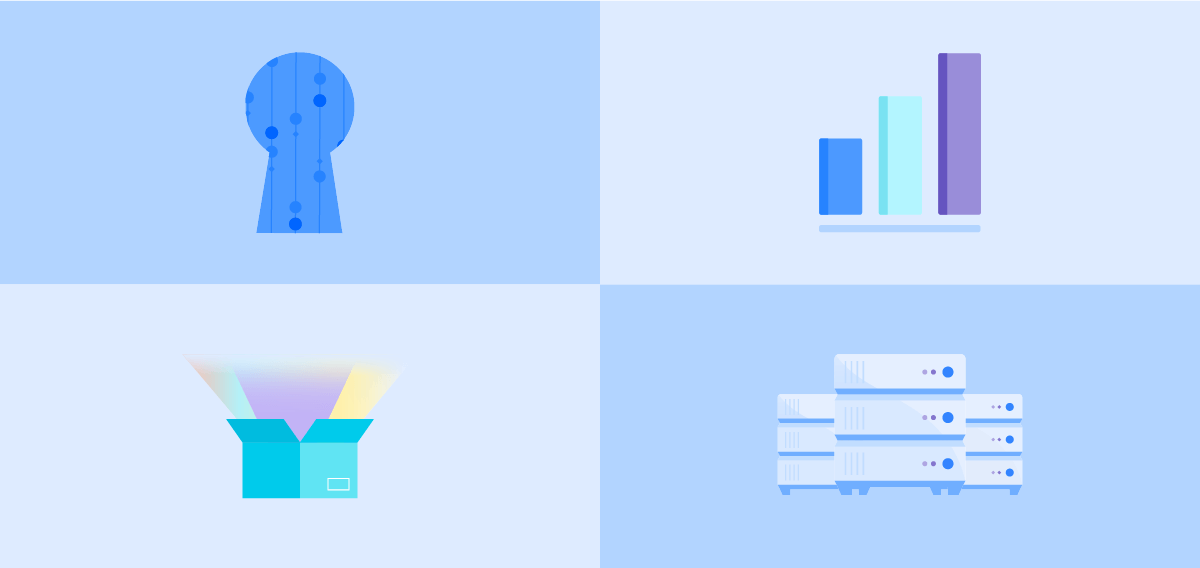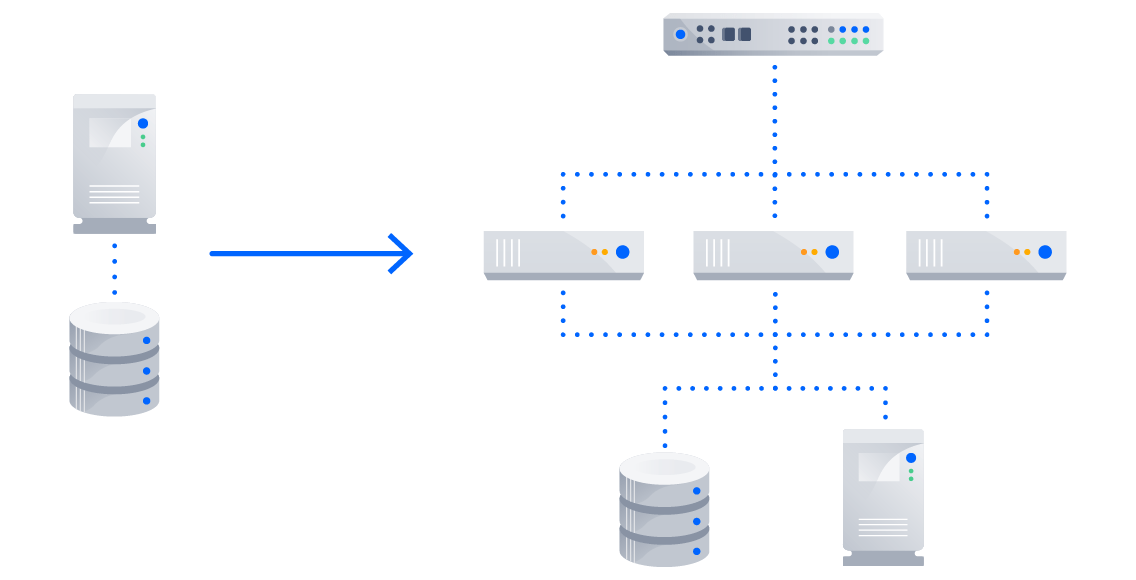
Data Center upgrade guide
No organization is the same, and neither is your migration journey. Follow our step-by-step upgrade guide to ensure a smooth transition from Atlassian Server to Data Center.
Define your Data Center environment Required
Application layer
Instances and locations
- Do you want to federate or consolidate your instances?
- What does your future growth look like?
- Do you need to have any data isolation?
- How many environments does your team have, such as staging or production environments?
Instances profiles
- How many people are going to be accessing your instance?
- Where are your teams going to be located?
- How much data is currently in your instance and how much data do you plan to add to your instance?
Apps, integrations, and customizations
Do you need all of them, or is this an opportunity to simplify?
Infrastructure layer
Instance sizing
- What are your future growth projections?
- Are there times when you have lower levels of user traffic?
For more information, here’s our node sizing overview.
Account structure
- Which accounts should your environment be deployed on?
- Do you want different accounts associated with each of your environments?
- Do you want your Data Center products to use the same account as your other CI/CD or collaboration tools?
Governance model
- What does your governance model look like?
- What are your minimal system standards?
- Are you using centralized logging?
- What are your user management needs?
Consider using AWS landing zone and AWS System Manager as part of your governance model.
VPC
-
Do you want to use a new virtual private cloud (VPC)?
Whether you want to deploy in a new VPC or use an existing one, you can leverage the Atlassian Standard Infrastructure (ASI) template.
- Are there any network principles that you want to change, such as limiting public internet access and internal IP addressing for office and VPN network routing?
- Should you use TLS certificates?
Geography
-
If using an existing VPC, have you come up with a plan for office and VPN network access?
We recommend that you allow access from all offices and VPNs as your product usage will most likely grow over time.
Direct Connect
- Do you want to use Direct Connect to help with performance and security?
- How much data do you need to move from your server instance to Data Center?
AWS Snow Family may be a resource that you may want to consider if you’re moving large amounts of data.
Business continuity and disaster recovery
Backup
What does your backup strategy look like?
We recommend that you use a combination of both your existing backup strategy and backup capabilities built into AWS. For more information, see:
AWS provides infrastructure services that are less prone to singular outages.
Regional failover
Do you need to implement cold, warm, or hot sites in different regions?
Typically, your disaster recovery needs are met by having your services run over multiple availability zones, but you may want to mitigate regional outages too. As you’re deciding if you want to implement these sites in different regions consider the following:
- Cost of infrastructure and data transfer
- Speed of recovery vs AWS
- Time spent maintaining and testing the recovery site
- Cost of running the site
Talk to an expert
Have a question about your migration options or path? Get expert guidance from our team of migration specialists.





